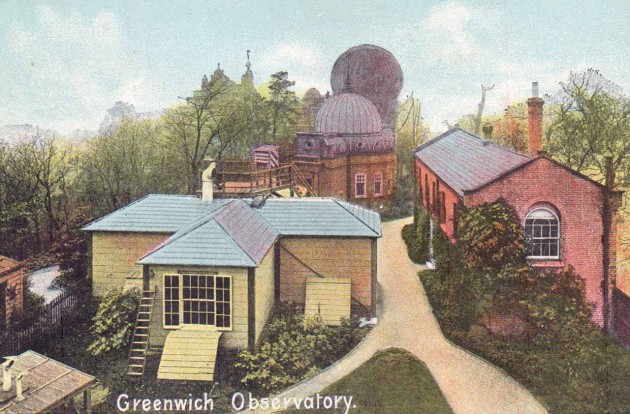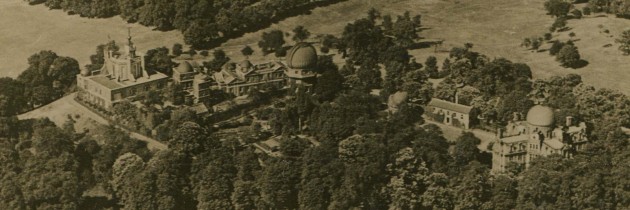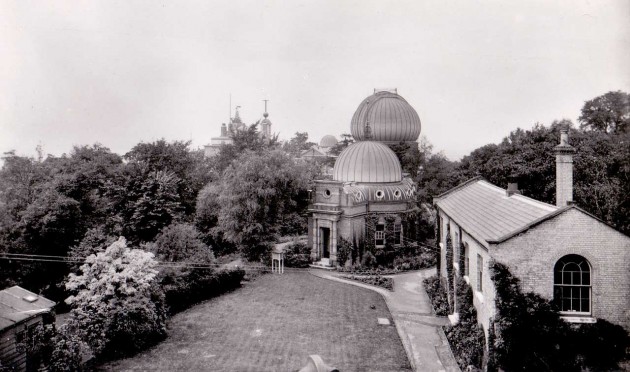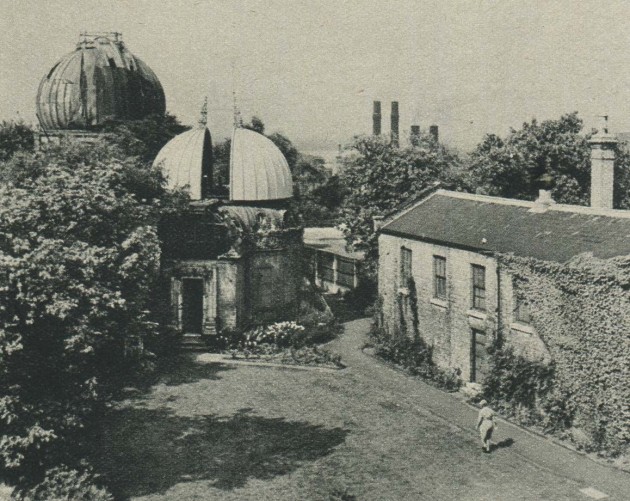…where east meets west
- Home
- Brief History
- The Greenwich Meridian
- Greenwich
(1675–1958) - Herstmonceux
(1948–1990) - Cambridge
(1990–1998) - Outstations (1822–1971)…
- – Chingford (1822–1924)
- – Deal
(1864–1927) - – Abinger
(1923–1957) - – Bristol & Bradford on Avon
(1939–1948) - – Bath
(1939–1949) - – Hartland
(1955–1967) - – Cape of Good Hope
(1959–1971)
- Administration…
- – Funding
- – Governance
- – Inventories
- – Pay
- – Regulations
- – Royal Warrants
- Contemporary Accounts
- People
- Publications
- Science
- Technology
- Telescopes
- Chronometers
- Clocks & Time
- Board of Longitude
- Libraries & Archives
- Visit
- Search
The New Library (Airy's)
By the mid 1870’s, the Observatory’s library was spread across four different locations and still growing. In 1878, Airy reported to the Board of Visitors that he had it in mind to erect a new brick building of about 50 feet by 20, consisting as he put it ‘of two very low stories (or rather of one story with a gallery running round its walls), so low that books can be moved by hand without necessity for a ladder.’ His proposed site was along the boundary with Blackheath Avenue facing the eastern window of his Magnetic Observatory – a site that at that time was occupied by the rubbish-yards of his workmen. Plans were drawn up by the Clerk of Works in 1879, and the cost estimated at £700. Although agreed in principle by the Admiralty in the following year, money was not allocated until 1881. In the meantime the site was cleared along with the Electrometer mast on the Magnetic Observatory.

The New Library (right) as seen from the South Building in about 1905. Airy's Magnetic Observatory which dominates the foreground was erected in 1837/8 and demolished in 1918. From a postcard published by Shurey's Publications
Construction work was carried out during 1881 under the superintendence of the Director of Works to the Admiralty. The materials were chosen to minimise any interference with the magnetic observations – the gallery for example was of wood and the heating stove (which was in the centre of the building) of copper. The bricks chosen were white. The building’s dimensions were 50 feet by 18. The lower book stacks were 7 feet high and the upper ones 7 feet 6 inches. The building’s only entrance was in the middle of its western side. The windows were all at the level of the upper book stacks, 5 on the long west side, one at either end and none on the east side facing the park. The upper book stacks were reached by flights of wooden stairs at either end.

In this aerial view from the early 1920s, the New Library is the second building from the right. Detail from an old postcard (SFS Series, No.1596)
Airy retired before the building was completed. The building took a long time to dry out and was not ready for occupation until the middle of 1882. At this point, the main books that were moved in were the sections of the library dealing with magnetism and meteorology, Christie having other uses for the building in mind. In 1886, the computers from the Spectroscopic and Photographic branches were moved in. By 1891, Christie was proposing to move the books into the yet to be built New Physical (South) Building. In 1892/3, four cases of shelves for the storage of forms and two cases for the storage of the exposed photographic plates were installed. Rather unfortunately, Airy had made inadequate arrangements for both warming and ventilating the building and in 1898 Christie reported to the Board that there had been damage in the winter months to the books and photographic plates that had been stored there, the damage being sufficiently serious in the case of the Astrographic plates, to render them useless though damage to the gelatine film. In 1899, the whole of the Observatory’s library was moved to a new home in the east, north and west wings in the basement of the New Physical Building, while the photographic plates together with the spare stock of the Observatory’s numerous publications (that had until then had been stored in a wooden shed) were moved to the upper floor. By 1914, the building was no longer referred to as the New Library, but as the Central Store. It was also referred to from time to time as the Publications Store.

The New Library (right) photographed from the South Building in the 1930s. To its left is the Altazimuth Pavilion with the Great Equatorial Building behind. From a postcard published by the Royal Observatory, Greenwich
The building suffered blast damage to the windows, roof and ceilings during the Second World War, and like the Altazimuth Pavilion also suffered shrapnel damage to the brickwork. In the first instance, only minor repairs were carried out, but in 1948/9, after the move to Herstmonceux had been announced, new window-sashes and a new entrance door were fitted. The roof was repaired, new gutters and drainpipes installed and external painting carried out. In 1950, a run of around 1500 feet of bookshelves was transferred to the West Hut at Herstmonceux.

A view showing the west side of the building. Note the war-time damage to the two telescope domes. From p.143 of the 28 October 1946 edition of Life
When the building was assessed for the Ministry of Works in 1950, it was deemed to be of no architectural value, but not unsightly; and that it might make a good book or records store. The Bailiff of the Parks begged to differ, urging that it should be removed with the warning that ‘if we are not careful the [National Maritime] Museum will wish to retain some of these highly ugly buildings as stores or on some other pretext’, and that the Museum should be strictly limited to the northern group of buildings. Plans were duly drawn up for the building’s demolition and a return of this part of the site to the Park. In the event, the building was demolished, but its site was transferred to the National Maritime Museum, along with the South Building and Altazimuth Pavilion. No records have been located that give the actual date of demolition. The building was still standing in late 1959. It may have been demolished in time for the Royal Opening of Flamsteed House in July 1960. If it was still standing then, it was most certainly gone within the next few years.
© 2014 – 2026 Graham Dolan
Except where indicated, all text and images are the copyright of Graham Dolan